Leveraging Mistral AI: Models, Helper Functions, and Use-Cases
 Saurabh Naik
Saurabh Naik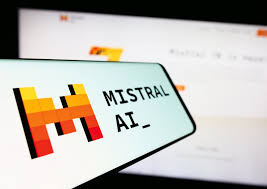
Introduction:
Mistral AI is a powerful platform that offers a variety of models designed to handle a wide range of tasks, from simple classification to complex reasoning and code generation. In this blog, we will explore the different types of Mistral models, how to create a Python helper function to access these models, and four practical use-cases. Additionally, we will discuss the steps to use function calling with Mistral, enhancing its utility in various applications.
Types of Mistral Models:
Mistral AI provides five endpoint APIs to cater to different requirements:
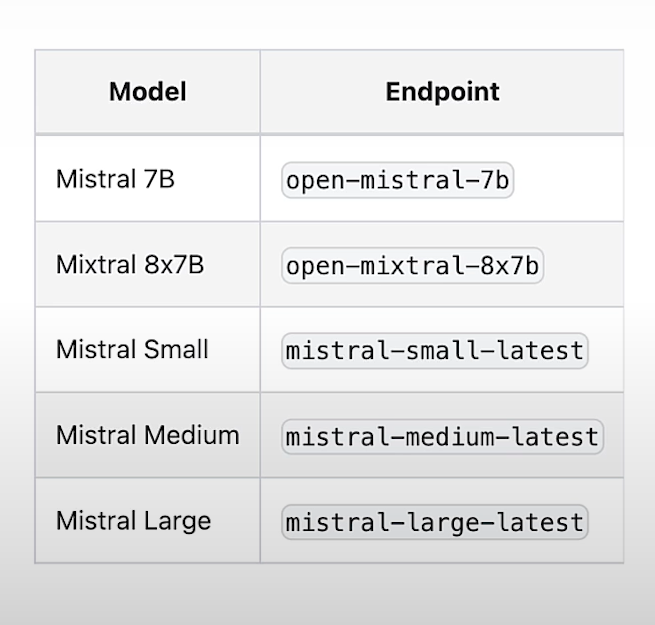
Mistral 7b
Mistral 8X7b
Mistral Small: Ideal for simpler tasks such as classification, customer support, and basic text generation.
Mistral Medium: Suitable for intermediate tasks requiring moderate reasoning capabilities like data extraction, summarization, and email writing.
Mistral Large: Best for complex tasks that need advanced reasoning, such as retrieval-augmented generation (RAG), code generation, and sophisticated text generation.
Model Usage Recommendations
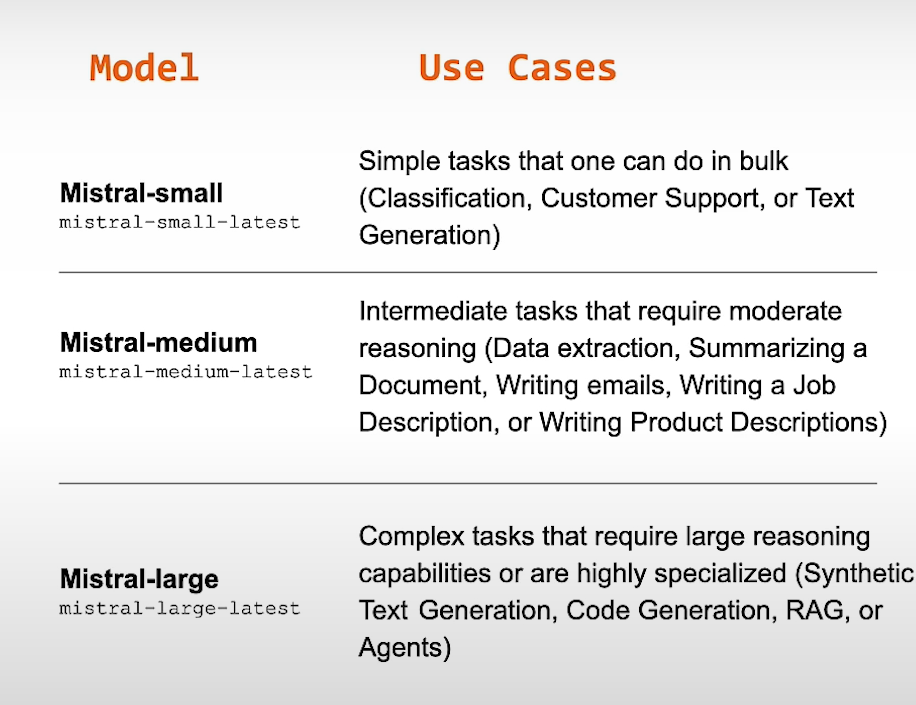
Mistral Small: For bulk tasks that are relatively simple, like classification, customer support, and basic text generation.
Mistral Medium: For tasks that need moderate reasoning, including data extraction, summarization, and writing emails.
Mistral Large: For complex tasks requiring significant reasoning capabilities, such as RAG, code generation, and advanced text generation.
How to Create a Python Helper Function to Access the Mistral Model
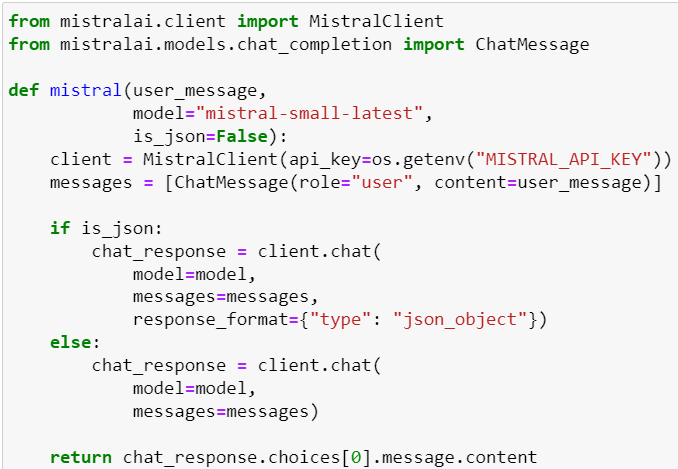
Creating a Python helper function to interact with Mistral models involves the following steps:
Define Mistral Client: Initialize the client by passing in the API key.
Define ChatMessage: Set the role of the message sender, which can be either user, system, or assistant.
Define Message Retrieval Method: Determine how to get the message. For a JSON response, pass the model, messages, and response format as a JSON object. For a non-JSON response, pass only the model and message.
Use-Cases for Working with Mistral
1. Classify Bank Customer Enquiries
Steps:
a. Design a Prompt:
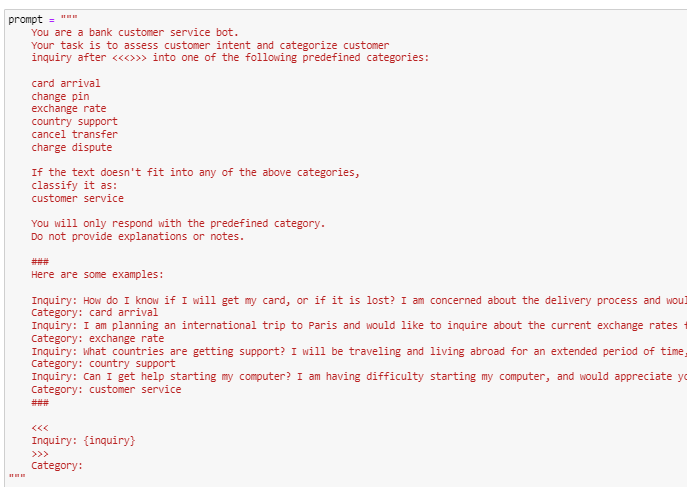
Assign a role to the LLM model and use few-shot learning in the prompt. Use different denominators to specify boundaries between the text.
b. Grammar Check:

Ask the Mistral model to check and correct grammar.
2. Information Extraction using JSON Load
Steps:
a. Design Prompt:
Pass information into the prompt and create a JSON schema for the desired output format. It is important to specifically ask for JSON format in the prompt.
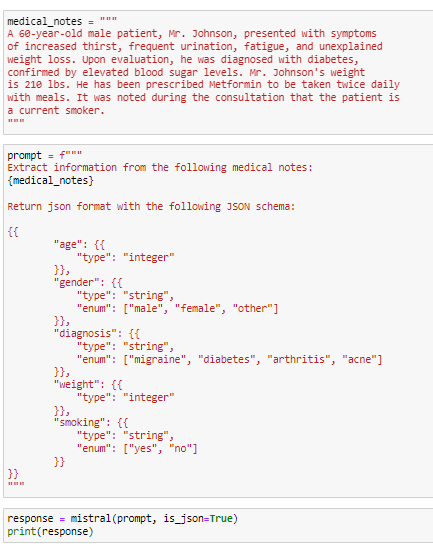
b. Set JSON Parameter:
Ask the Mistral model for a response by setting the is_json parameter to True and then pass the prompt.
3. Personalized Bot
Steps:
a. Design Prompt: Assign the role of LLM at the beginning along with a few instructions. Provide clear, factually correct information to guide the Mistral model.

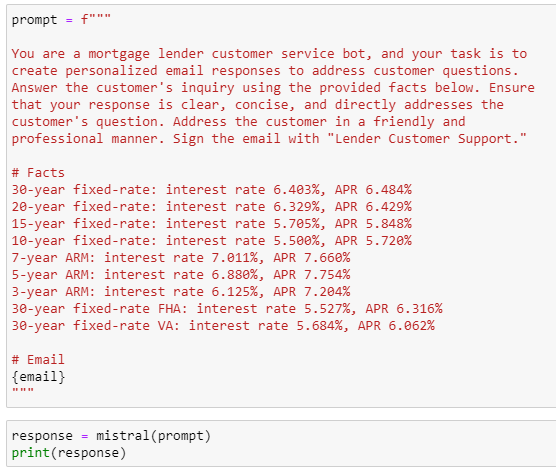
b. Get Response: Request a response from the Mistral model.
4. Summarization
Steps:
a. Design Prompt: Assign the role of the LLM at the beginning with a few instructions. Ask the model to summarize the data, provide three thought-provoking questions, and return an analysis report.
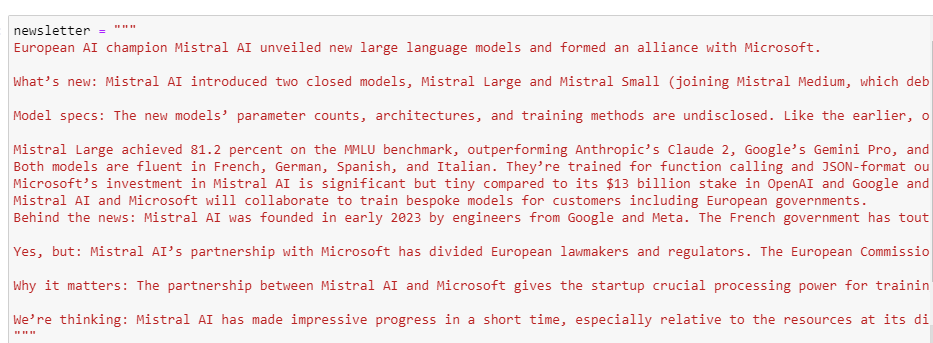
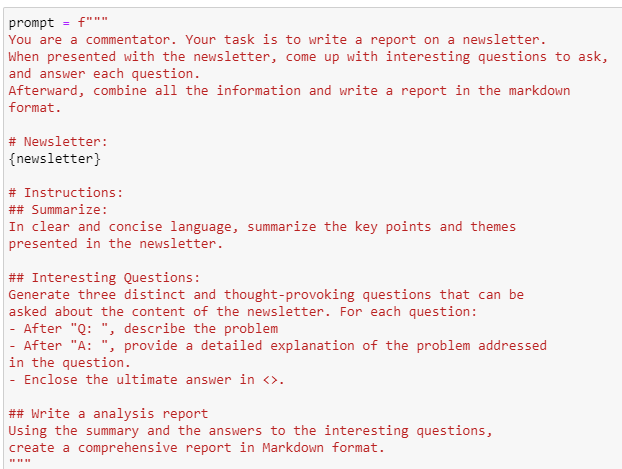
b. Get Response: Request a response from the Mistral model.
How to Use Function Calling with Mistral
To use function calling with Mistral, follow these steps:
Define the Custom User Function: Create the function you want to call.
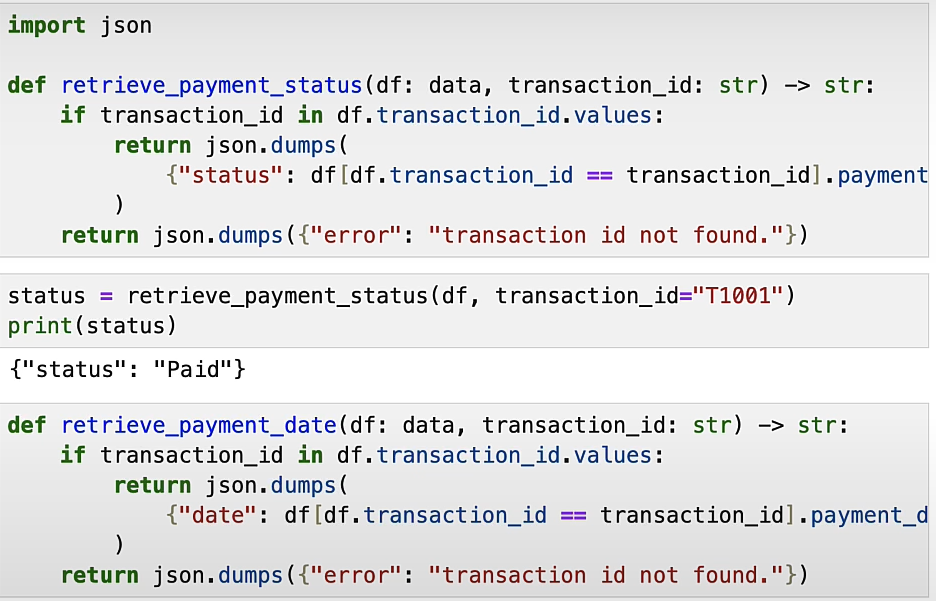
Define the JSON Schema: Specify the JSON schema for the custom user function.
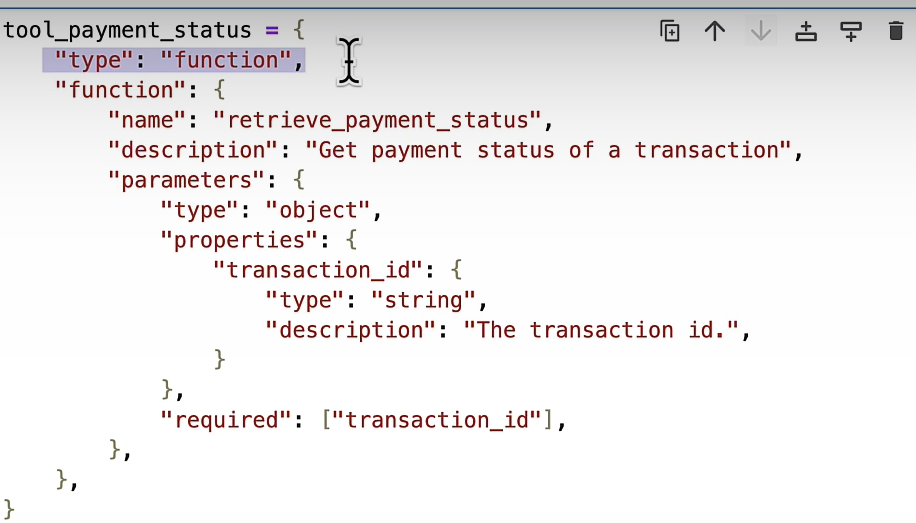
Create a List for Schemas: If there are multiple JSON schemas, store them in a list.

Create a Dictionary for Tools: Map the function name to the function along with the data.

Retrieve Response: When retrieving the response from Mistral, pass the tools and set the tools choice to
auto.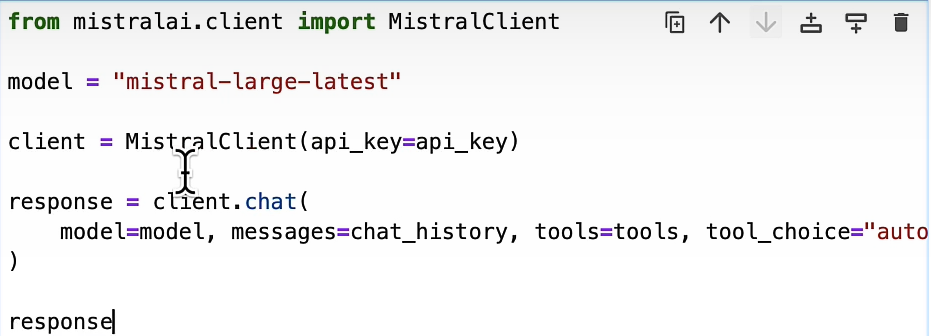
Conclusion
Mistral AI offers a versatile range of models that can be tailored to various tasks, from simple classification to complex reasoning and code generation. By creating Python helper functions and leveraging function calling, you can maximize the utility of Mistral models in your applications. Whether you are classifying customer enquiries, extracting information, developing personalized bots, or summarizing data, Mistral AI provides robust solutions to enhance your AI capabilities.
Subscribe to my newsletter
Read articles from Saurabh Naik directly inside your inbox. Subscribe to the newsletter, and don't miss out.
Written by

Saurabh Naik
Saurabh Naik
🚀 Passionate Data Enthusiast and Problem Solver 🤖 🎓 Education: Bachelor's in Engineering (Information Technology), Vidyalankar Institute of Technology, Mumbai (2021) 👨💻 Professional Experience: Over 2 years in startups and MNCs, honing skills in Data Science, Data Engineering, and problem-solving. Worked with cutting-edge technologies and libraries: Keras, PyTorch, sci-kit learn, DVC, MLflow, OpenAI, Hugging Face, Tensorflow. Proficient in SQL and NoSQL databases: MySQL, Postgres, Cassandra. 📈 Skills Highlights: Data Science: Statistics, Machine Learning, Deep Learning, NLP, Generative AI, Data Analysis, MLOps. Tools & Technologies: Python (modular coding), Git & GitHub, Data Pipelining & Analysis, AWS (Lambda, SQS, Sagemaker, CodePipeline, EC2, ECR, API Gateway), Apache Airflow. Flask, Django and streamlit web frameworks for python. Soft Skills: Critical Thinking, Analytical Problem-solving, Communication, English Proficiency. 💡 Initiatives: Passionate about community engagement; sharing knowledge through accessible technical blogs and linkedin posts. Completed Data Scientist internships at WebEmps and iNeuron Intelligence Pvt Ltd and Ungray Pvt Ltd. successfully. 🌏 Next Chapter: Pursuing a career in Data Science, with a keen interest in broadening horizons through international opportunities. Currently relocating to Australia, eligible for relevant work visas & residence, working with a licensed immigration adviser and actively exploring new opportunities & interviews. 🔗 Let's Connect! Open to collaborations, discussions, and the exciting challenges that data-driven opportunities bring. Reach out for a conversation on Data Science, technology, or potential collaborations! Email: naiksaurabhd@gmail.com